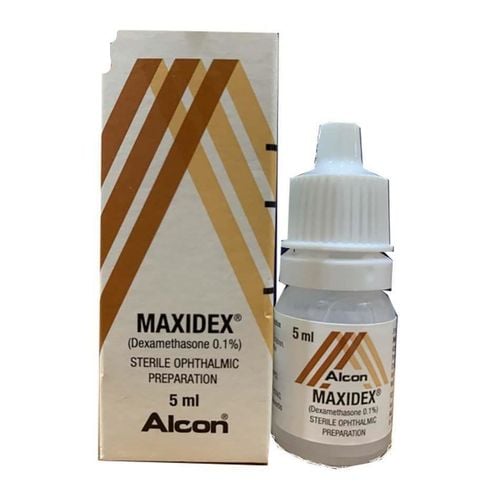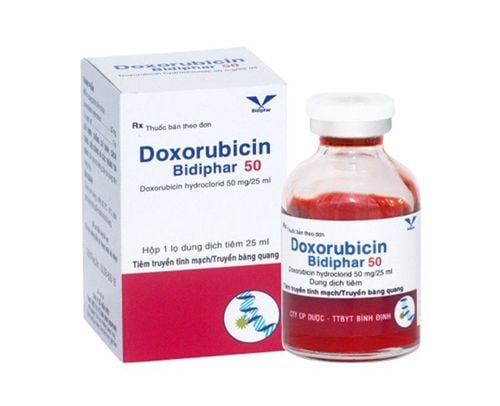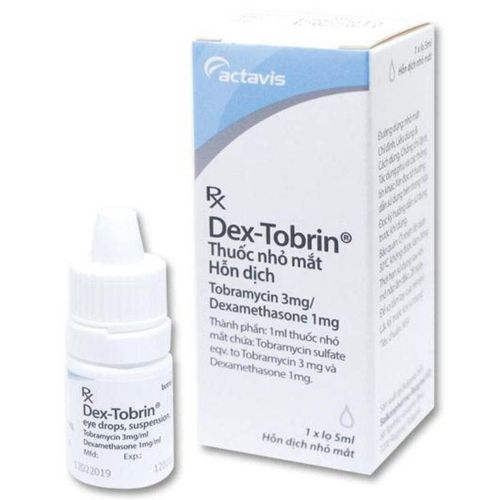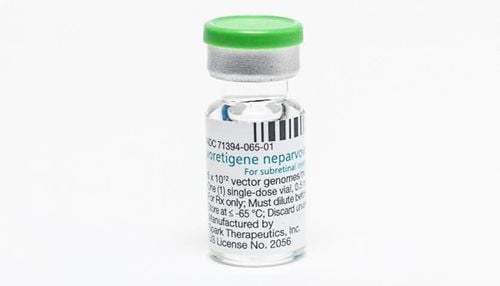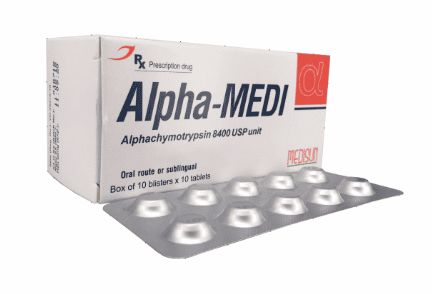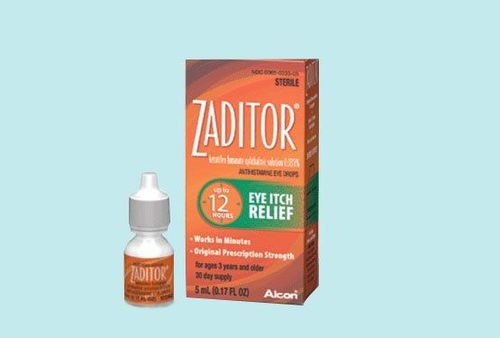This is an automatically translated article.
Pilocarpine eye drops are used to treat glaucoma (high pressure in the eye). Pilocarpine reduces the amount of fluid inside the eye, to reduce pressure inside the eye. The following article will provide more about the effects and effective use of Pilocarpine.1. What is Pilocarpine eye drops?
Pilocarpine belongs to the group of drugs used to treat diseases of the eyes, ears, nose and throat. Prepared in many forms such as:Eye gel: 4% pilocarpine hydrochloride content. Ophthalmic solution form: 0.25%, 0.5%, 1%, 2%, 3%, 4%, 5%, 6%, 8%, 10% (with active ingredient pilocarpine hydrochloride) and 1%, 2% , 4% (with active ingredient pilocarpine nitrate). Tablet form: 5mg and 7.5mg pilocarpine hydrochloride content. Pilocarpine is used as an anesthetic, to reverse the action of weaker muscle jerks, and in the emergency treatment of glaucoma.
For Pilocarpine eye drops solution: After applying 1% solution of nitrate or pilocarpine hydrochloride to the conjunctival sac, the patient's pupil constricts within 10 to 30 minutes, maximum contraction time is within 30 minutes and The effect of the drug usually lasts 4 to 8 hours or sometimes up to 20 hours. IOP decreased within 60 minutes and maximum reduction time within 75 minutes. The drop in intraocular pressure lasts from 4 to 14 hours, depending on the concentration of the drug you use in the eye.
For eye ointment Pilocarpine: When you go to bed, you put a dose of pilocarpine hydrochloride 4% gel into your eyes, the drug will reduce eye pressure for about 18 to 24 hours. In the morning, intraocular pressure usually decreases more than in the afternoon. Gel eye drops have a high viscosity which allows the drug to be stored longer in the anterior corneal area; Therefore, when compared with topical drops, the gel form is likely to increase corneal bioavailability and ocular effects for a longer duration.
For oral pilocarpine: A study report in a group of male volunteers, after 2 days of taking 5 or 10mg pilocarpine hydrochloride tablets 3 times a day, the test showed the maximum drug concentration in the blood. Blood levels were 15ng/ml and 41ng/ml, respectively, with doses of 5 and 10mg and the time to reach maximum blood concentrations was 1 hour.
In addition, with the oral form, the volume of distribution of Pilocarpine reaches 2.1 L/kg, Pilocarpine is not bound to plasma
With the oral form, Pilocarpine is metabolized mainly with CYP2A6. Serum esterases are also involved in the conversion of pilocarpine to pilocarpic acid.
With the oral route, pilocarpine is excreted unchanged (approximately 20%) and 3-hydroxy pilocarpine (approximately 35%) in the urine. The half-lives of each form were 1.35 and 0.76 hours after repeated administration of 5 mg and 10 mg.
2. What are the uses of Pilocarpine eye drops?
2.1. The mechanism of action of Pilocarpine eye drops
Pilocarpine, an alkaloid obtained from the plant Pilocarpus jaborandi Holmes or the plant Pilocarpus microphyllus Stapf is a direct cholinergic parasympathetic agent, which acts through direct stimulation of muscarinic receptors and smooth muscles such as the iris and secretory glands. Pilocarpine eye drops contract the ciliary body, increasing tension on the sclera and opening the trabecular reticular space to facilitate drainage of aqueous humor. Reduces outflow resistance, which lowers intraocular pressure (IOP). Pilocarpine also induces contraction through contraction of the iris sphincter. Mitosis attenuates positional angle narrowing and closure, reducing IOP in certain types of angle-closure glaucoma.When used topically (into the eye), Pilocarpine causes pupillary constriction, reducing intraocular pressure should be used to treat glaucoma.
Taken in appropriate doses, the drug can be used to treat dry mouth, dry eyes caused by increased secretion of exocrine glands such as sweat glands, salivary glands, lacrimal glands, stomach, pancreas, intestines and mucosal cells. mucous membranes of the respiratory tract.
The drug also stimulates intestinal smooth muscle in a dose-dependent manner which may cause hypertonia, increased peristalsis, spasm, and pain. Bronchial smooth muscle tone may be increased. Urinary tract, gallbladder, and bile duct smooth muscle tone and movement may also be increased.
2.2. Indications for use of Pilocarpine
Pilocarpine is indicated in the following cases:Ophthalmic form: Treatment of glaucoma (increased eye pressure). Pilocarpine hydrochloride gel form: Long-term use for the treatment of chronic, noncongestive, simple open-angle glaucoma. Ophthalmic solution form: Used when rapid reduction of intraocular pressure or intense pupillary constriction is required, such as in the emergency treatment of acute angle-closure glaucoma before surgery, or to reduce intraocular pressure and protect the lens. before a Schlemm tube opening or iris removal procedure. Oral form: For the symptomatic treatment of dry mouth due to insufficiency of the salivary glands, which occurs after radiation therapy for head and neck cancer. Treatment of dry mouth and dry eyes in patients with Sjogren's syndrome, an autoimmune disease that impairs salivary and tear glands.
2.3. Contraindications of Pilocarpine eye drops
Pilocarpine is contraindicated in the following cases:Patients with hypersensitivity to any component of Pilocarpine can be used as eye drops for children, but absolutely do not use oral form for children. Eye drops are contraindicated in patients with anterior uveitis, acute iritis, some forms of secondary glaucoma. Patient uses soft contact lenses. Oral administration is contraindicated in patients with uncontrolled bronchial asthma, chronic obstructive pulmonary disease (COPD), uncontrolled heart and kidney disease, acute iritis, blepharitis, insufficiency. heavy liver.
2.4. Side effects of Pilocarpine eye drops
Similar to many other medicines, Pilocarpine eye drops can also bring some side effects such as:Common reactions
Eye drops use: Blurred vision, or reduced ability to see at night, itching, burning burning. Oral administration: flushing, facial edema, edema, tachycardia, increased blood pressure. Dizziness, chills, pain, fever, headache, somnolence. Nausea, constipation, flatulence, vomiting, diarrhea, dyspepsia, glossitis, gastritis, loss of taste, increased salivation. Urinary incontinence, urinating several times a day, vaginitis. Muscle pain, weakness, muscle tremors. Rhinitis, nosebleeds, sinusitis, cough, difficulty swallowing. Blurred or abnormal vision, lacrimation, conjunctivitis. Itching, tinnitus, rash. Hypersensitivity reactions, sweaty limbs, altered voice. Uncommon reactions
Eye drops: Eye pain, eye irritation, headache, eyebrow pain. Rare reactions:
Increased blood pressure, tachycardia. Increased salivation, diarrhea, nausea, vomiting, Burning, conjunctival congestion, lacrimation, ciliary body, cataracts, myopia, retinal detachment, orbital pain. Bronchospasm, pulmonary edema. Sweating.
2.5. Drug interactions
The following drugs should not be used or taken with caution:Beta-adrenergic blockers, because conduction disturbances may occur. Antagonists when co-administered with Pilocarpine may lead to additive pharmacological effects. Co-administration of Pilocarpine with anticholinergic drugs will reduce the effect of the drug because they antagonize each other Do not use together with drugs with neuromuscular blocking effects (such as Colistin, Clindamycin, Aminoglycoside, Cyclopropane) and anesthetics used Inhalation administration containing halogen derivatives antagonizes the effects of Pilocarpine. Drugs such as Chloroquine, Procainamide, Lithium, Quinine, Quinidine, Propafenone, Hydroxychloroquine, and beta adrenergic blockers have the potential to aggravate myasthenia gravis.
2.6. Overdosage of Pilocarpine eye drops
Systemic toxicity following topical use of Pilocarpine is rare, but sensitized patients may occasionally experience sweating and gastrointestinal overactivity following recommended dosages and administration. Overdose can cause sweating, salivation, nausea, tremors and slow pulse and drop in blood pressure. In the case of moderate overdose, spontaneous recovery is expected and is supported by intravenous fluids to compensate for dehydration. For patients with severe poisoning, Atropine, a pharmacological antagonist of Pilocarpine, should be used.3. How to use Pilocarpine eye drops?
3.1. How to use Pilocarpine eye drops?
Read and follow all directions on your medication label. Use the medicine exactly as directed. Wash your hands with soap before using the eye drops. Do not use eye drops while wearing soft contact lenses. This preservative in Pilocarpine can permanently stain your glasses. If your contact lenses cannot be removed then also administer the Medication at least 10 minutes before your contact lenses are inserted. Shake eye drops well just before use. Bring the vial close to the eye: Tilt your head back slightly and pull the lower eyelid down to create a small pocket. Hold the dropper above the eye and place one drop in this pouch. Close your eyes for 1 or 2 minutes. Use only the small amount of medicine your doctor has prescribed. Wait at least 5 minutes before using any other eye medication your doctor has prescribed. Do not touch the tip of the eye dropper or place it directly on your eye. Contaminated droppers can infect your eyes, leading to serious vision problems. Do not use eye drops if the liquid has changed color or has particles in it. Call your doctor for a new prescription. Store this medication in an upright position at room temperature. Do not let cold3.2. Dosage of Pilocarpine eye drops
Reducing elevated intraocular pressure (IOP) in patients with open-angle glaucoma or ocular hypertension One drop of 1%, 2%, or 4% pilocarpine hydrochloride ophthalmic solution should be applied topically in the eye(s) eyes up to four times per day. Pilocarpine-nave patients should be started with a 1% concentration because higher concentrations are often not initially tolerated. The frequency of instillation and the concentration of pilocarpine hydrochloride are determined by the severity of the glaucoma and the patient's response.To limit systemic exposure to Pilocarpine, patients may be instructed to perform a cystectomy within 2 minutes of instillation of pilocarpine hydrochloride eye drops.
Management of acute angle-closure glaucoma Before using pilocarpine hydrochloride ophthalmic solution, treatment with an inhibitory and an expectorant may be necessary to reduce IOP to less than 50 mmHg and reduce ischemia. set in the iris.
For the initial management of acute angle-closure glaucoma, one drop of pilocarpine hydrochloride 1% or 2% ophthalmic solution may be applied topically in both eyes up to three times for 30 minutes.
If laser dilation or ablation surgery is used, a drop of 4% pilocarpine hydrochloride ophthalmic solution should be administered prior to the procedure. After laser ablation, 1% pilocarpine hydrochloride eye drops should be applied four times daily until anastomosis can be performed.
Prevention of elevated IOP following surgery associated with laser surgery
One drop of pilocarpine hydrochloride 1%, 2%, or 4% ophthalmic solution (or two drops injected five minutes apart) should be applied topically for the eye) 15 to 60 minutes before surgery.
Mitosis induction One drop of pilocarpine hydrochloride 1%, 2%, or 4% ophthalmic solution (or two drops administered five minutes apart) should be applied topically in the eye(s).
Use with other eye medications Pilocarpine hydrochloride ophthalmic solution can be used in combination with beta-blockers, carbonic anhydrase inhibitors, sympathomimetics or stimulants. If you are using more than one type of eye drops, they should be used at least five minutes apart.
Use in pediatric patients In children under 2 years of age, one drop of pilocarpine hydrochloride 1% ophthalmic solution should be applied topically in the eye(s) three times daily. Children 2 years of age and older can take the same dosage as adults but should consult a doctor
For stimulation of eyelash extensions before mastectomy or spondylectomy in children, one drop pilocarpine hydrochloride 1% or 2% ophthalmic solution should be applied topically in the eye 15 to 60 minutes before surgery.
3.3. Precautions while using Pilocarpine eye drops
Poor lighting Patients should exercise caution when driving at night and doing other hazardous work in poor lighting conditions.Pre-existing retinal disease Rare cases of retinal detachment have been reported with use in certain susceptible individuals and in those with pre-existing retinopathy; Therefore, thorough retinal examination including ophthalmoscopy is advised in all patients prior to initiation of treatment.
Vasculitis Pilocarpine hydrochloride eye drops are not recommended for iritis.
Primary Congenital Glaucoma Caution should be exercised when using Pilocarpine hydrochloride ophthalmic solution in pediatric patients with primary congenital glaucoma to control intraocular pressure (IOP) because paradoxical increases in IOP have been reported. reported. In addition, the use of Pilocarpine hydrochloride ophthalmic solution is not recommended in pediatric patients diagnosed with glaucoma secondary to anterior segment dysplasia or uveitis (especially if uveitis is ongoing). work).
Contact lenses worn Contact lens wearers should remove their contact lenses prior to instilling Pilocarpine hydrochloride eye drops and wait 10 minutes after dosing before reinserting their lenses.
Please dial HOTLINE for more information or register for an appointment HERE. Download MyVinmec app to make appointments faster and to manage your bookings easily.




